Boneless Wings and Chunks
*Datassential, 2024
Page contents:
Understanding Boneless Wings and Chunks | Cooking Profiles | Breading Types | Breading Styles | Recipes | Storage and Handling
Understanding Boneless Wings and Chunks
The culinary world often debates whether boneless chicken wings and chicken nuggets are the same, but key distinctions set them apart. Boneless wings, often sourced from flavorful chicken breast, are cut into bite-sized pieces to provide a premium dining experience. This choice of meat, known for its leanness, aligns well with a variety of menu offerings.
In contrast, chicken nuggets are generally composed of a mix of different chicken parts, including skin and darker meats, which may be formed into shapes. This method differs significantly from the preparation of boneless wings, which are carefully crafted to ensure both quality and consistency in every bite.
Cooking Profiles
Selecting the right product based on your operation’s needs can significantly save prep time, reduce waste and cut costs. Below are the cooking profiles available to best align with your menu and budget requirements:
Fully Cooked Products
These items are ready to heat and serve, simplifying kitchen operations. Simply fry or bake in an oven according to the packaging instructions. Ideal for fast service environments, as they save time and labor.
Par-Fried Products
Partially cooked to reduce final cooking time in your kitchen. Require a quick dip in a deep fryer to set the breading and achieve crispy results. Must reach an internal temperature of 165°F. They offer a faster preparation than raw products, while allowing for a crispy, fresh-finished texture.
Raw Products
Offer flexibility in preparation, but require full cooking. Need a thorough cook in a deep fryer or other cooking methods to set the breading and ensure crispiness. Must be cooked to an internal temperature of 165°F to ensure safety. Generally more cost-effective than pre-cooked options; suitable for establishments emphasizing freshly cooked meals.
Breading Types
Breaded
Fritter
- Contains more than 30% breading by weight
- Cost-effective and suitable for heavier sauces
- Must be labeled as fritters by USDA, due to their appearance
- Known for longer hold times; ideal for dishes that may sit before serving
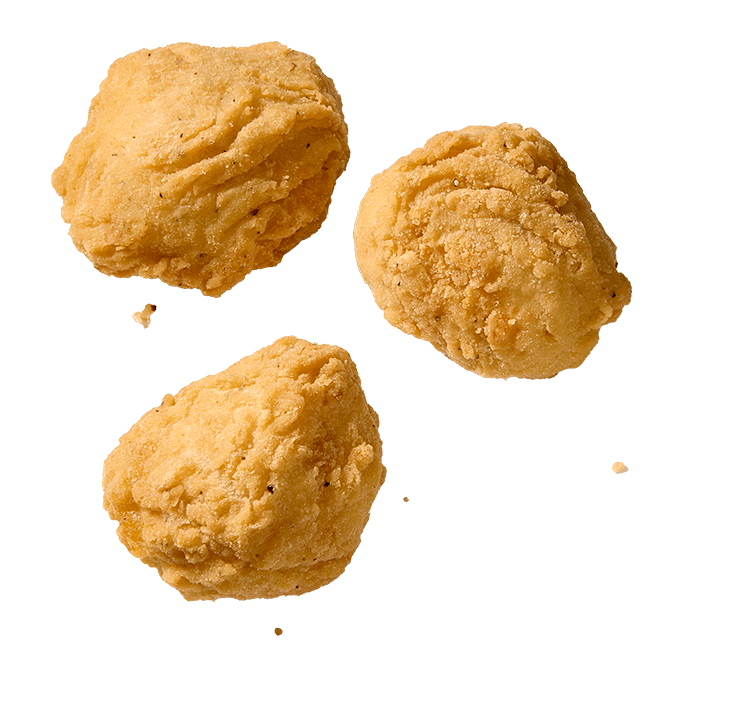
Non-Fritter
- Features less than 30% breading
- Provides a higher proportion of meat
- Results in a slightly higher cost
- Best used with light seasonings or dry rubs
- Enhances the natural flavor of the meat
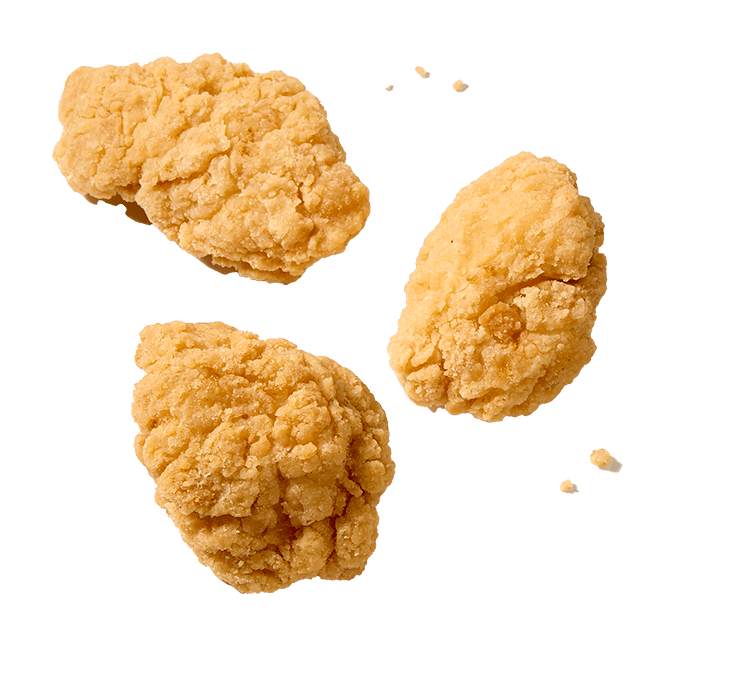
Unbreaded
- Consists of skinless, seasoned chicken chunks without any breading
- Offers a healthier alternative for menus
- Versatile and suitable for a variety of dishes
- Perfect for salads, pastas, flatbreads and children’s menus
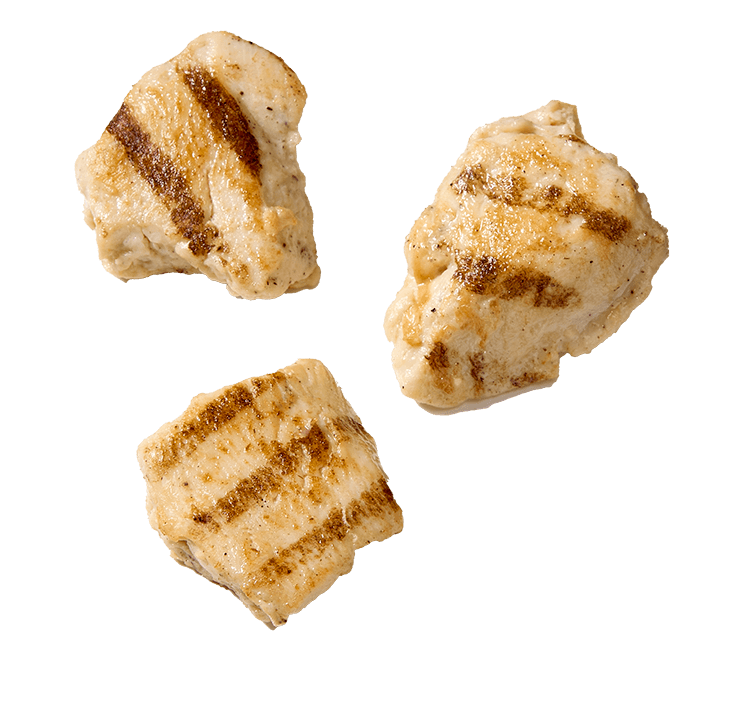
Varieties of Breading Styles
Classic (Flat Breaded)
Achieves a uniform breading by being processed on a flat line, ensuring consistent coverage and a standard look.

Homestyle (Barrel Breaded):
Provides a rustic, hand-breaded look with uneven breading, ideal for a homemade appearance.
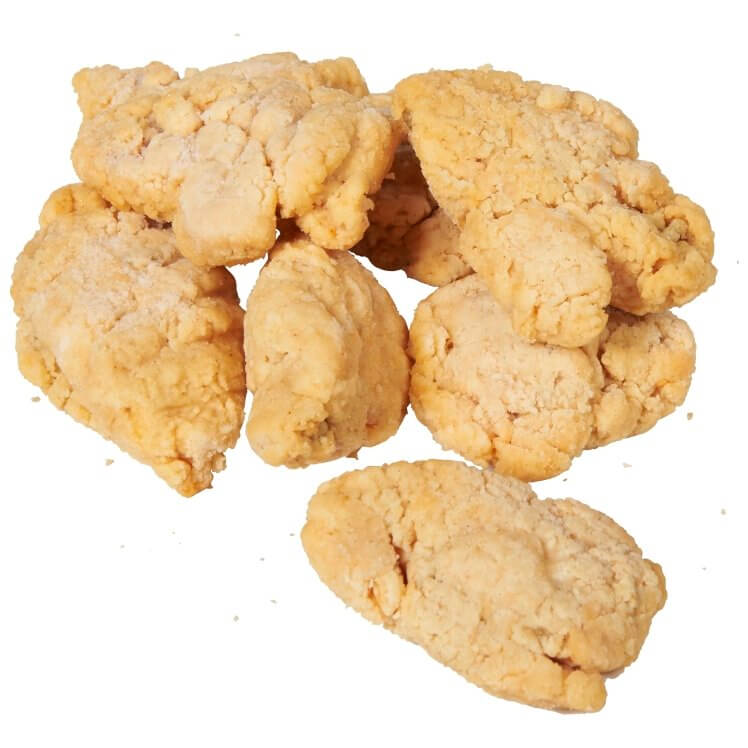
Battered
Includes light coatings such as tempura for a delicate, crispy texture; or beer batter for a unique flavor profile suitable for a crunchy bite.
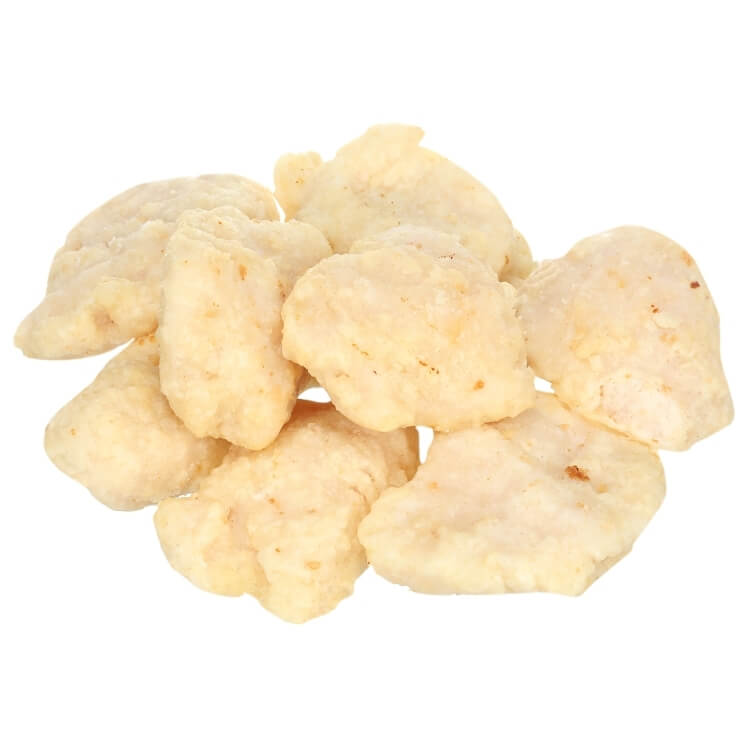
Transform Your Offerings with Trendsetting Boneless Wing Recipes
Our culinary team's passion for innovation is at the heart of our menu development, consistently delivering new and exciting recipes that set trends. Emphasizing boneless wings, our chefs craft versatile dishes that capitalize on their popularity and ease of preparation. Dive into our collection of boneless wing recipes—each influenced by the latest culinary trends from Scoop™ and Food Fanatics® magazines. These recipes offer fresh approaches and creative twists that can elevate your offerings and attract more customers. Explore how our ever-evolving, trend-setting boneless wing recipes can breathe new life into your menu and keep diners coming back for more.
STORAGE AND HANDLING
Due to the various cooking profiles, please reference COP Cooler Map for the best ways to safely store and handle chicken tenders.


